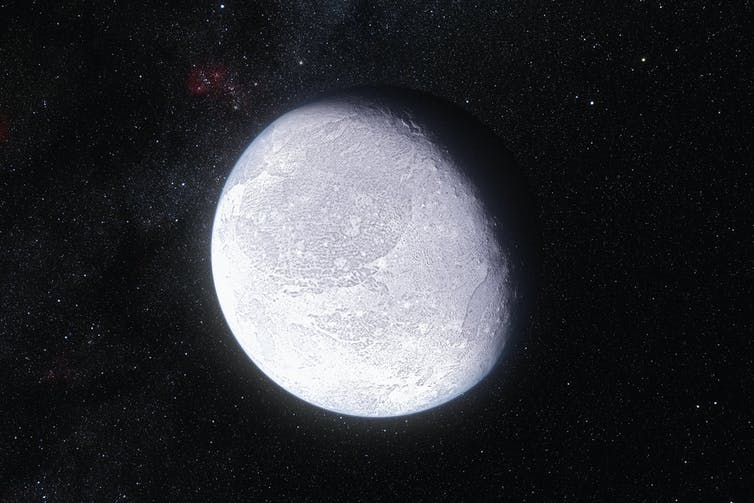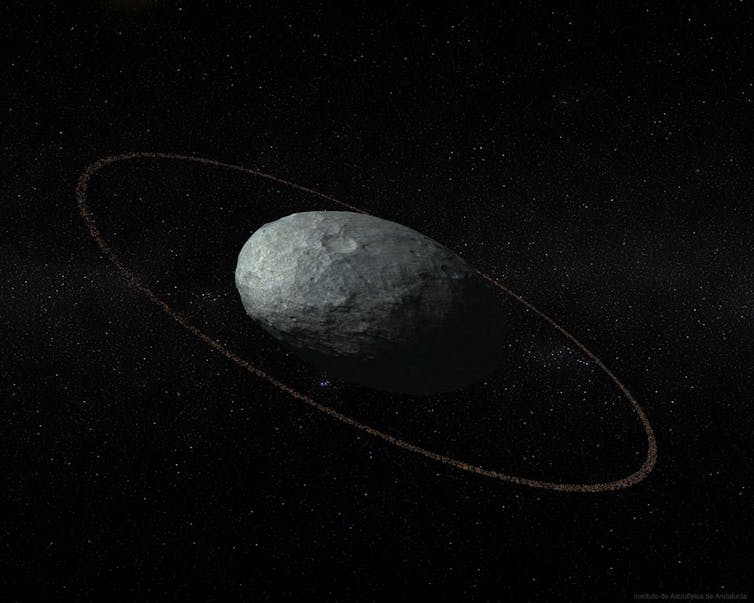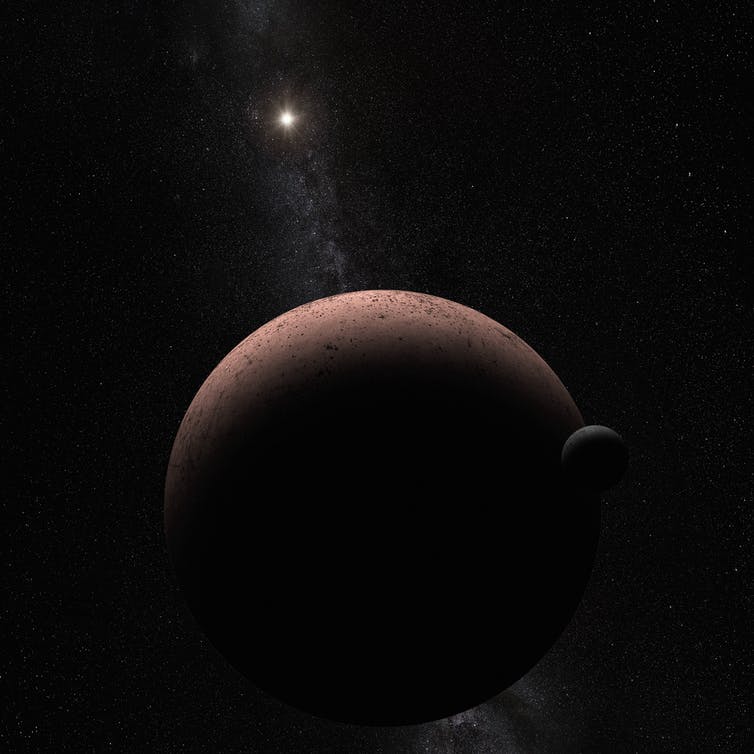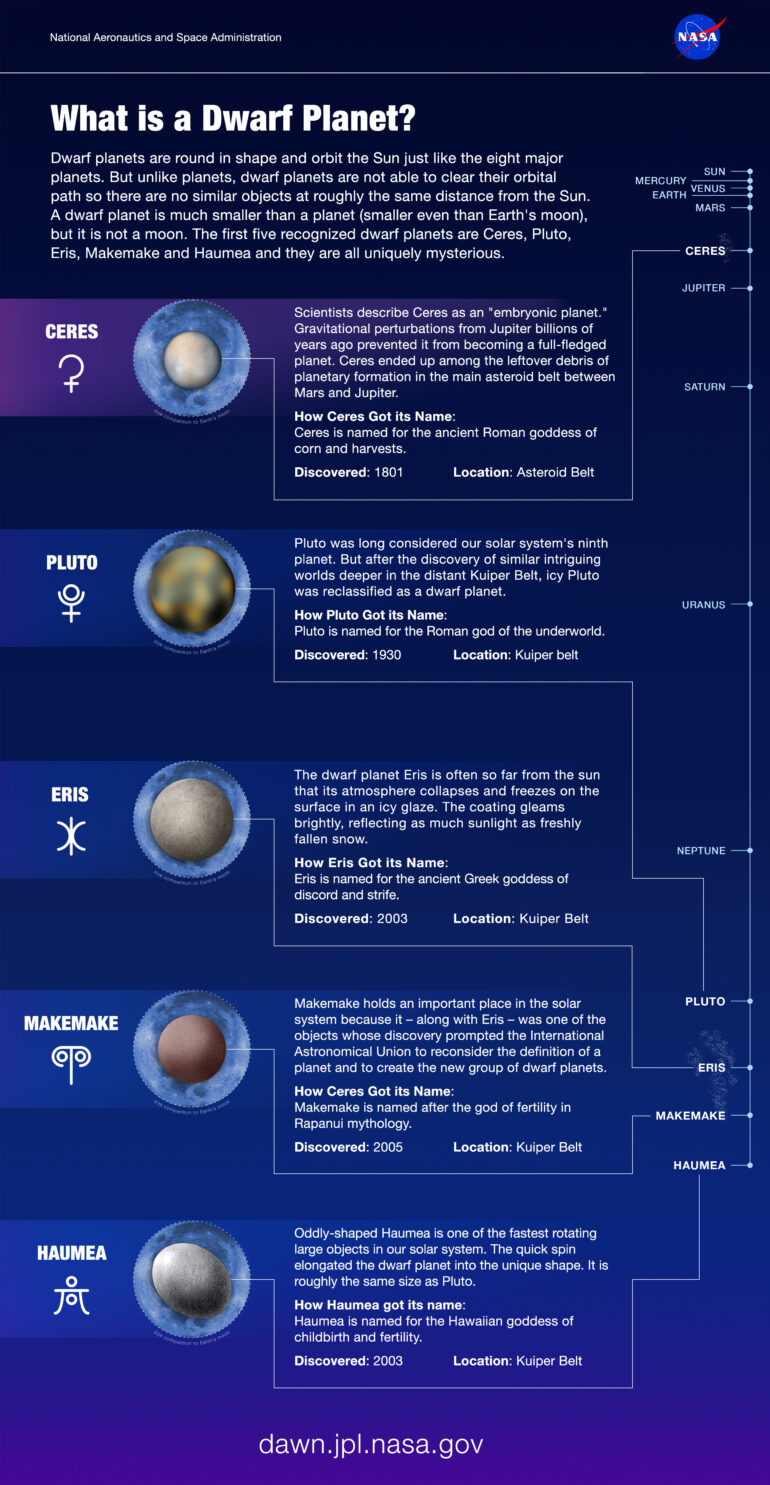
Curious Kids is a series for children of all ages. If you have a question you’d like an expert to answer, send it to [email protected].
What is a dwarf planet? – Myranda, age 8, Knoxville, Tennessee
The word “planet” came from the ancient Greek words that mean “wandering star.” That makes sense, because for thousands of years, people have watched planets change position in the night sky – unlike stars, which appear fixed and unmoving to the naked eye.
That’s how the ancients discovered five of the planets: Mercury, Venus, Mars, Jupiter and Saturn. Astronomers using telescopes found Uranus in 1781, Neptune in 1846, and Pluto in 1930.

Artist’s impression of the dwarf planet Eris.
ESO/L.Calçada and Nick Risinger
Solar system leftovers
I’m a space scientist with a passion for astronomy and the exploration of the Solar System. I received my Ph.D. in physics in 1994, about the time astronomers began to find more and more objects beyond Neptune, in the Kuiper belt. That’s a place in space that holds the “leftovers” of the solar system – particularly small icy bodies.
Three of those icy bodies – Eris, Haumea and Makemake – were discovered in the early to mid 2000s. They seemed large enough to be planets; all of them are roughly the same size as Pluto.
Astronomers then surmised that there were likely many more of these icy bodies in the Kuiper belt. They began to wonder: How many planets might we end up identifying in our solar system? Twenty? Thirty? A hundred? More?

An artist’s illustration of the dwarf planet Haumea, surrounded by its ring.
Instituto de Asrofísica de Andalucía
Dwarf planet defined
In 2006, and after much debate, the International Astronomical Union came up with a new definition for a planet. And for the first time, the term “dwarf planet” was used.
Here’s what the IAU said: A planet has to orbit the Sun directly. It also must be large enough to have a round, or spherical, physical shape.
And the planet must “clear its neighborhood.” That means, aside from any moons it might have, the planet can’t share its orbit with other objects of comparable size.
An object that satisfies only the first two criteria – but not the last – is now called a dwarf planet.

Artist’s illustration of Makemake, a dwarf planet in the Kuiper belt. Nearby is its moon, MK 2. Off in the distance: the Sun.
NASA/ESA/A. Parker/Southwest Research Institute
Pluto is demoted
That’s why Pluto lost its status as a planet and is now classified as a dwarf planet. It failed the final item on the checklist – other icy Kuiper belt bodies are within its orbital path. The decision, a controversial one to be sure, is debated by scientists to this very day.
At the same time Pluto got demoted, another solar system object…



